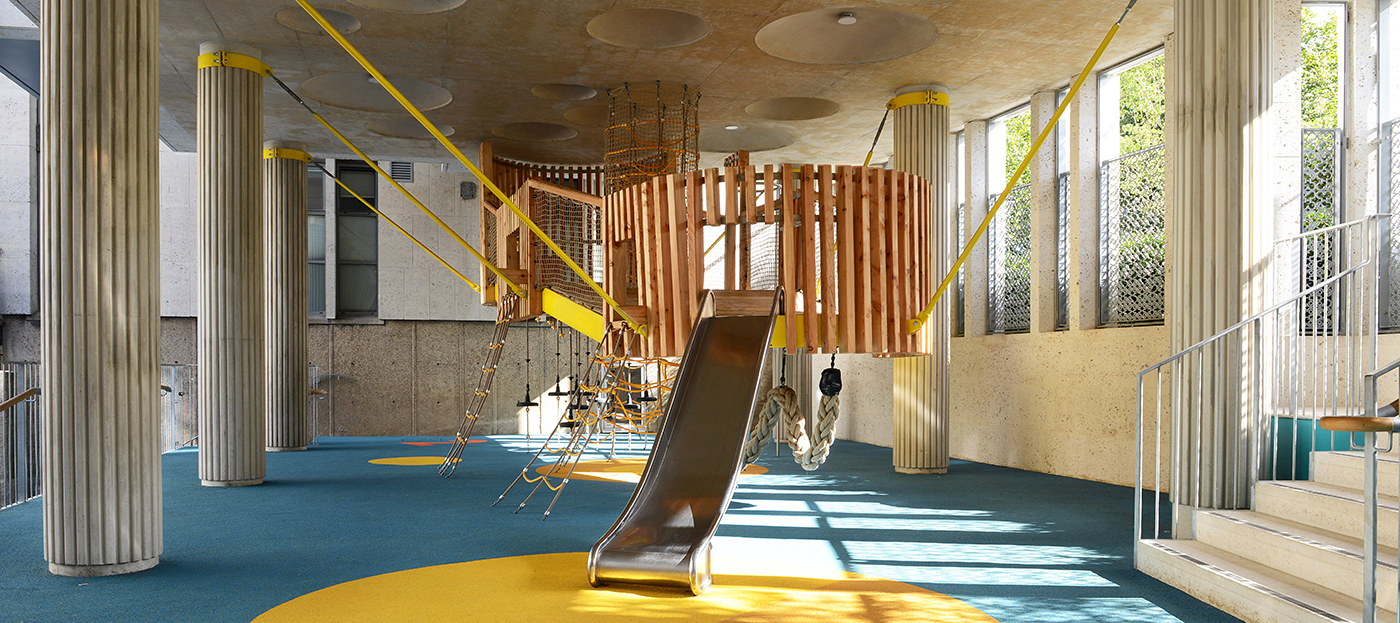Playgrounds have undergone significant changes over the past 100 years, evolving from simple swings and slides to highly advanced and interactive play structures.
In the early 20th century, playgrounds were designed primarily for physical exercise and consisted of simple equipment such as swings, seesaws, and slides. The playgrounds were made of metal and wood and often lacked safety features such as soft surfaces to cushion falls. As a result, children were frequently injured on these playgrounds.
In the mid-20th century, there was a growing awareness of the importance of play in children’s development. Playgrounds began to incorporate more imaginative and creative elements, such as sandpits, climbing walls, and playhouses. Safety also became a priority, and playgrounds were equipped with soft surfaces, such as rubber or sand, to reduce the risk of injury.

In the latter part of the 20th century, playground equipment continued to evolve with the introduction of new materials and technologies. The use of plastic and composite materials allowed for the creation of larger and more elaborate play structures. Some of these structures incorporated interactive features such as rope bridges, tube slides, and climbing ropes.
In recent years, the use of technology has played an increasingly important role in playground design. Electronic and digital elements, such as interactive sensors, sound systems, and displays, have been added to playgrounds to provide children with a more immersive and engaging play experience.
 At the same time, there has been a growing emphasis on the educational value of play. Playgrounds now often incorporate elements designed to teach children about science, math, and the environment. For example, some playgrounds feature wind turbines, water wheels, and rock walls that teach children about energy and gravity.
At the same time, there has been a growing emphasis on the educational value of play. Playgrounds now often incorporate elements designed to teach children about science, math, and the environment. For example, some playgrounds feature wind turbines, water wheels, and rock walls that teach children about energy and gravity.
Another trend in recent years has been the move towards inclusive and accessible playgrounds, which are designed to meet the needs of children with disabilities. Playgrounds now often incorporate elements such as ramps, Braille signage, and wheelchair-accessible swings.
Finally, there has been a growing emphasis on sustainability in playground design. Many playgrounds now use recycled materials and incorporate elements designed to reduce energy use and waste. For example, some playgrounds feature solar panels and rain gardens.
In conclusion, playgrounds have come a long way over the past 100 years, evolving from simple structures to highly advanced and interactive play spaces. With a focus on safety, education, inclusion, and sustainability, today’s playgrounds provide children with a wide range of opportunities to play, learn, and grow.



